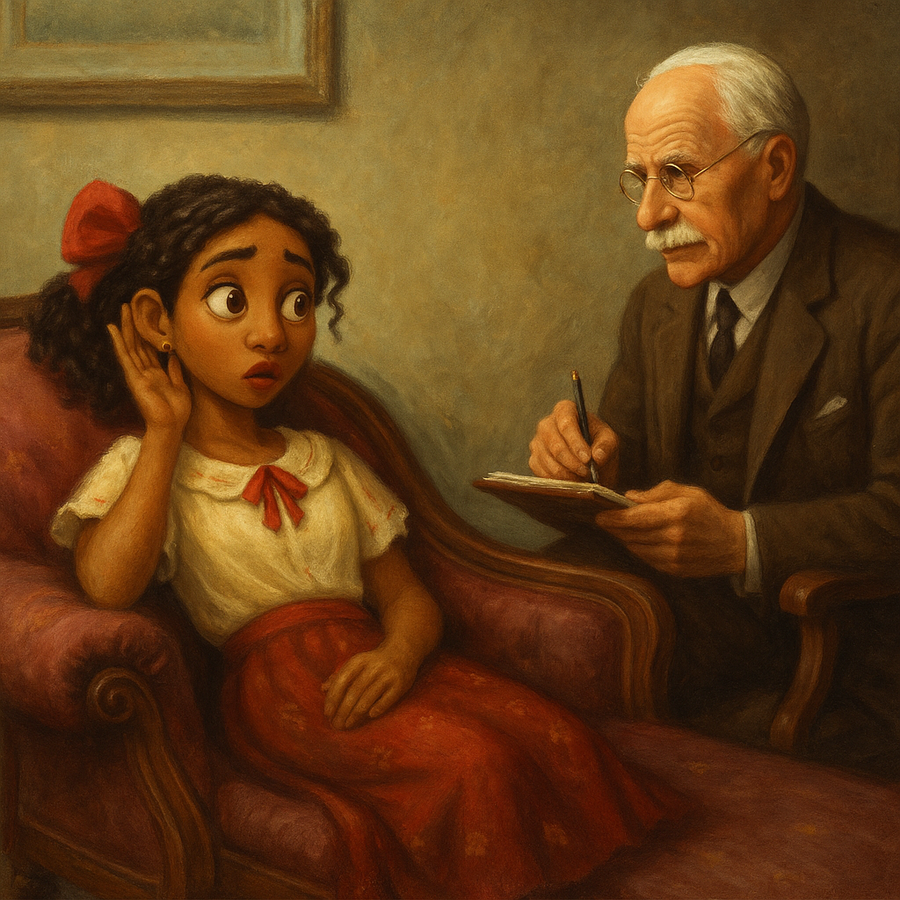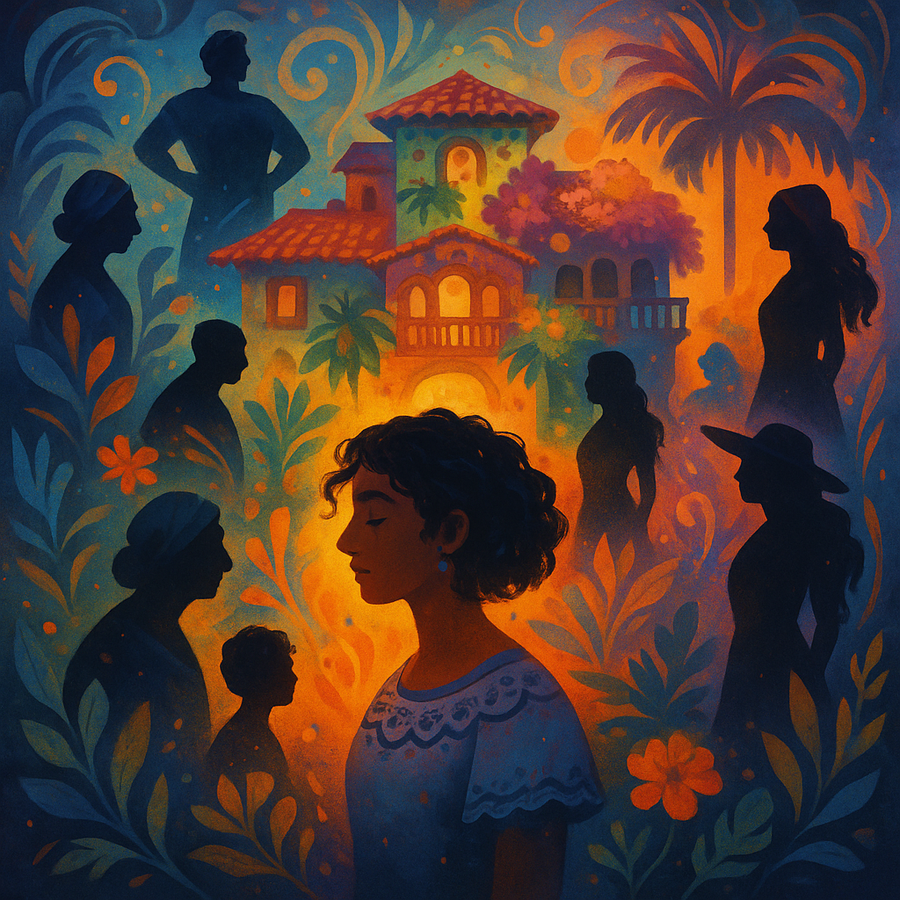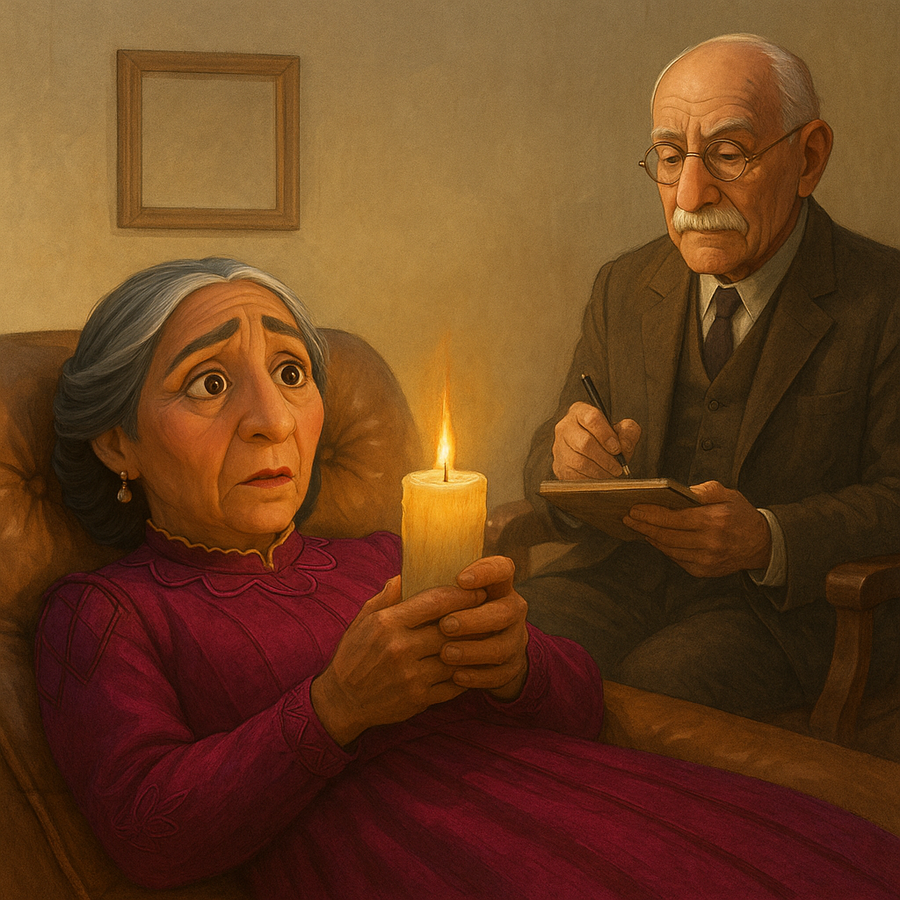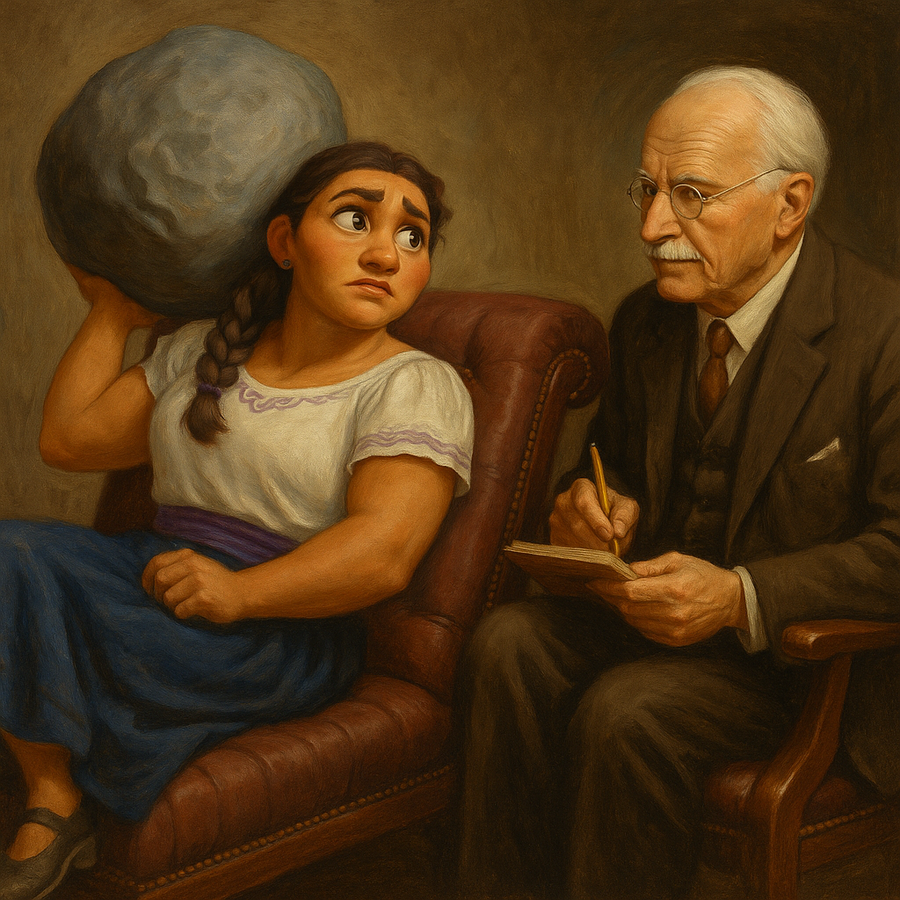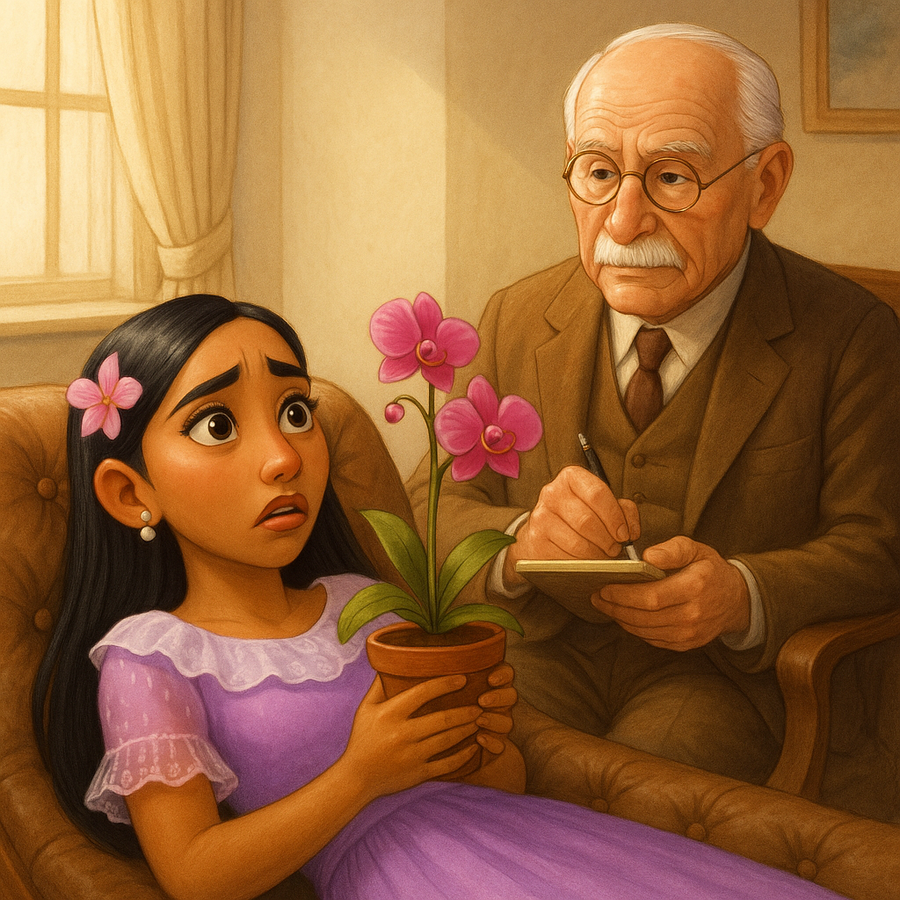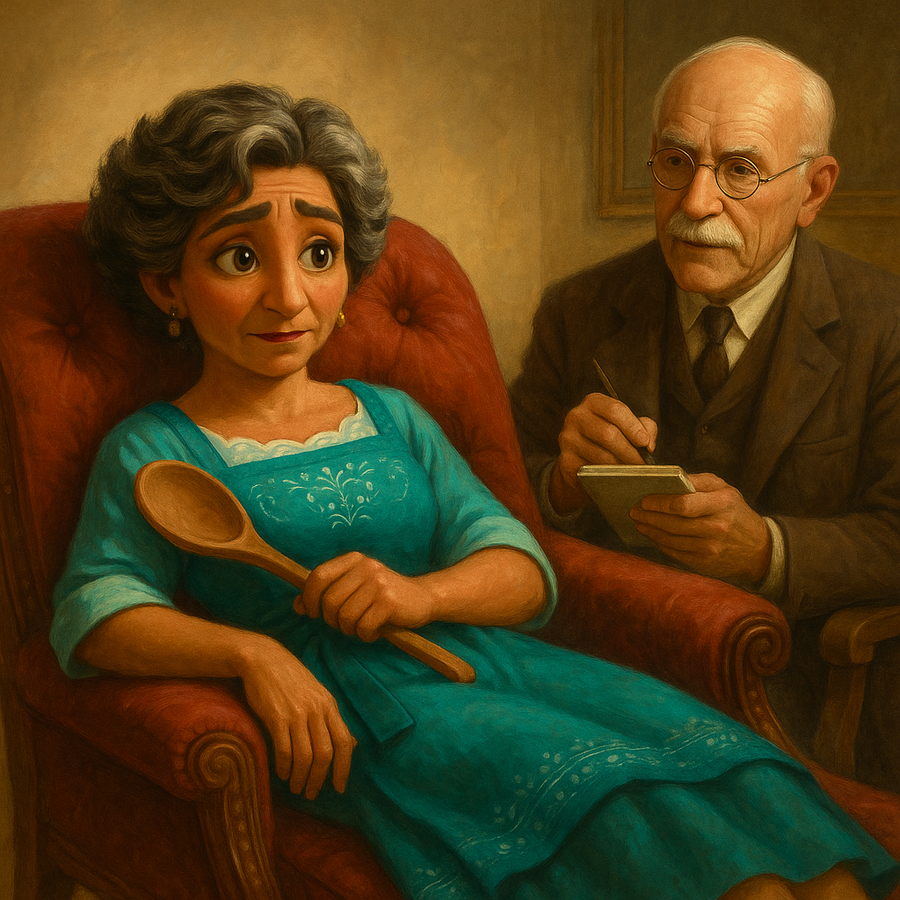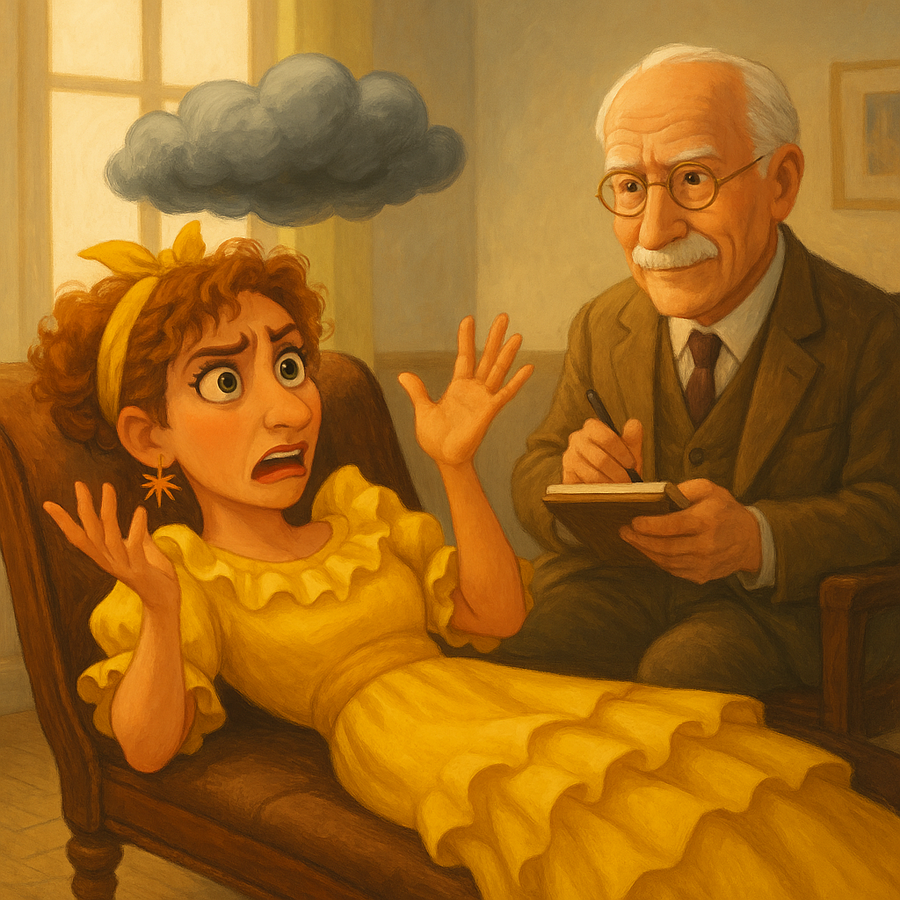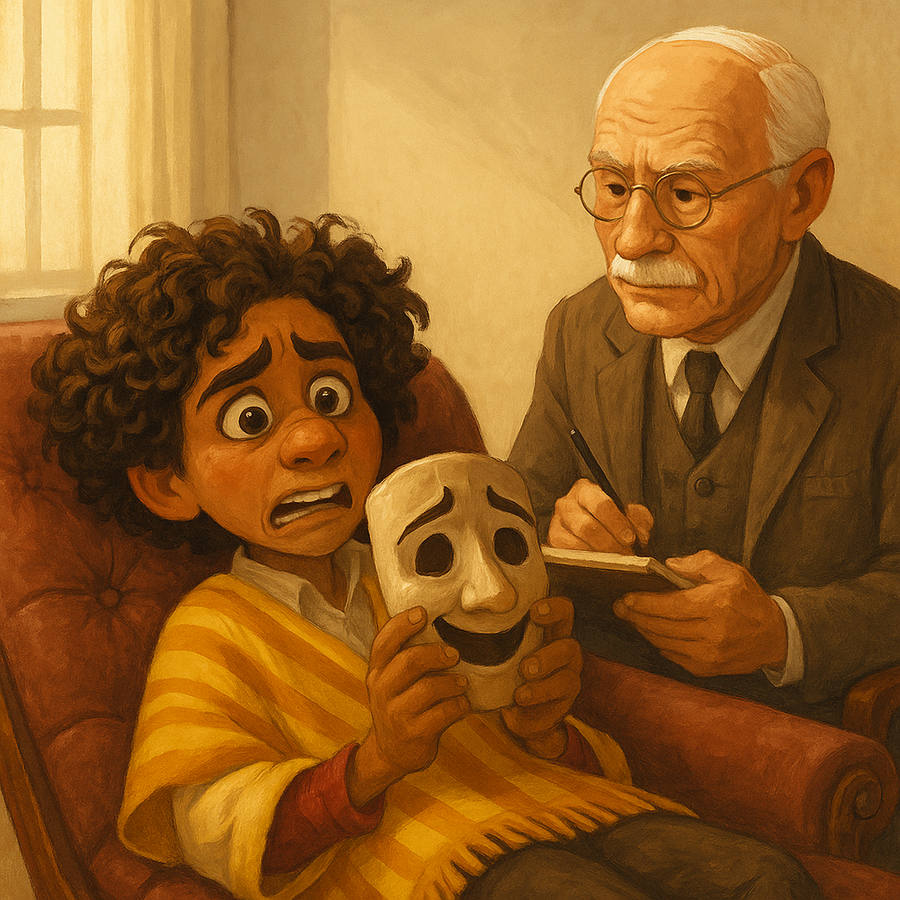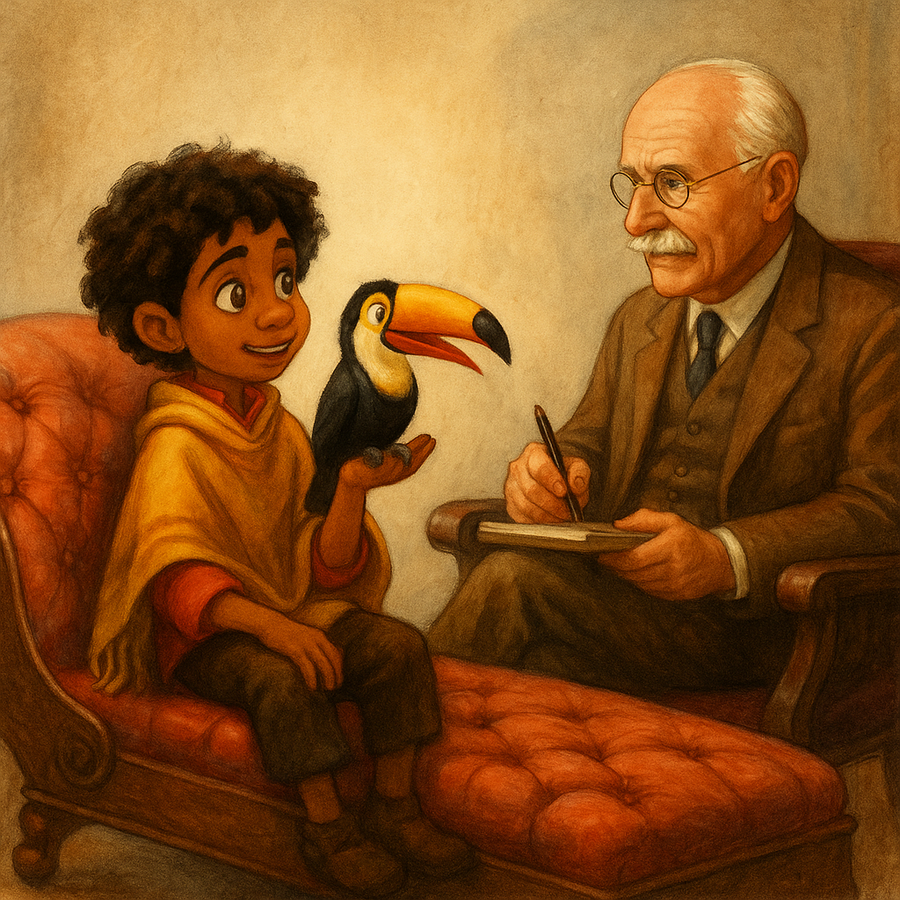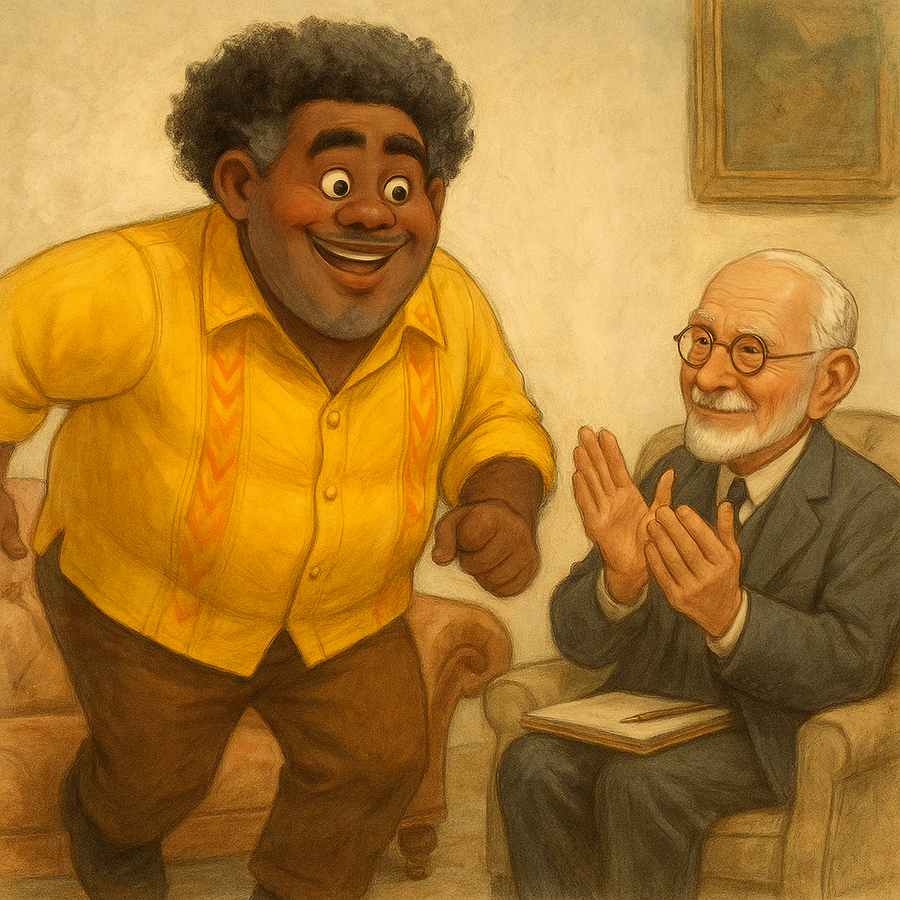Archetype: The Invisible Child / The Holder of Secrets / The Watcher
Dolores is the quiet keeper of the Madrigal family’s secrets. Her gift of super-hearing makes her attuned to everything—and everyone—but her role is one of silence, not voice. She is the archetypal Invisible Child, a figure often overlooked not because of lack of ability, but because of a learned strategy: staying quiet to maintain peace. In this role, Dolores represents the child who listens instead of speaks, observes instead of engages, and carries what others won’t say aloud.
In Jungian terms, Dolores echoes The Watcher or the Silent Seer, someone who absorbs the emotional landscape without interrupting it. She embodies the shadow side of The Observer archetype: present but unacknowledged, valuable but not valued. Her silence is not neutrality—it is suppression. She knows things others don’t, but she is not empowered to act on that knowledge.
From an Internal Family Systems (IFS) perspective, Dolores may be burdened with a Manager part that values invisibility as safety. This part protects her by preventing her from becoming a target of conflict. Simultaneously, she carries Exile parts filled with grief, frustration, and unmet needs—especially the need to be heard, validated, and seen. Her quietness is not peace; it is a protective shield.
Through the 7 Inner Child Archetypes, Dolores closely aligns with The Quiet Child—one who adapts by taking up as little space as possible. This child often grows into a hypervigilant adult, attuned to emotional shifts, keenly aware of tensions before they erupt, and burdened with the stories of others.
Dolores’ moment of emotional honesty—when she finally admits she hears everything and it overwhelms her—is small but profound. It reveals the cost of constant vigilance. What she needs is not more silence, but a space to speak without fear. Her evolution would not require her to be louder, but freer: able to share what she knows without consequence. She is not only a listener—she is a living archive of what the family refuses to address. Her healing begins when others start listening to her in return. In the final scenes of the film, when Mirabel and Mariano see her, she gently expresses her long-hidden feelings for him—a quiet yet profound act of self-expression.
Narratively, this moment signals Dolores’s shift from passive observer to active participant in her own desires.
Psychologically, she moves from Invisible Child to Witnessed Self—someone whose needs and truths are finally voiced.
Relationally, her dynamic with Mariano is recontextualized not as a triangle of rivalry, but as an honest expression of affection after the collapse of external expectations.
She speaks not just as a listener of others, but as someone finally being heard, seen, and validated for who she is. Dolores hears everything but says little, representing the archetype of the Hyperaware Child—often a trauma adaptation. In family systems, she is the Observer or Ghost, present but not engaged, knowing the truth but unacknowledged. She may also function as a Shadow Witness, holding unspoken family burdens.
